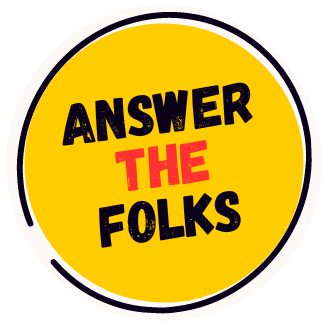5 Effective Replies for When Your Friend Texts “Text Me When You Get Home”
We’ve all been there. You’re out having fun with friends but your communicator back home wants constant updates on your whereabouts. While it comes from a place of care and concern, constant checking in can get overbearing. As a friend wanting to respect boundaries but also assure safety, it’s a tricky line to walk. In this blog post, I’ll share 5 thoughtful yet firm replies you can use when your friend texts “text me when you get home” along with tips for setting healthy communication norms.
Quick Responses:
- Don’t worry, I’ll be home safely after work/school/my plans. Talk later!
- On my way now. Almost home so no need to check in till I’m there.
- Still catching up with friends but I promise to let you know once I’m back safely.
- Out and about for a bit longer. I’ll message once I’m home so you don’t have to wait up for me.
- Heading off now, don’t stress – I always let you know when I’m back safe and sound.
- Wrapping things up here, be home in a bit. No need for constant updates, see you after!
- Running late having fun with pals but I’m responsible so you know I’ll check in later like always.
- Chilling with crew, hoping to see a late movie too. I’ll message at end of night like we agreed, k?
- Got your message, still out though. You know I’ve got this, see you when I’m back home!
- Appreciate the concern but trying to be present here. Trust that I’ll touch base after as always, so don’t worry!
A caring but clear “I appreciate your concern”
When someone cares about you, it’s natural to want to know you arrived safely. However, we all need space to live our lives freely without constant oversight. A kind yet rational response is, “I appreciate your concern for my well-being. Please don’t worry – I’ll be sure to text once I’m home.” Phrasing it this way acknowledges their care while reassuring independence. It sets an expectation for one check-in rather than an open-ended agreement for constant updates. Saying “please don’t worry” emphasizes trusting your abilities instead of viewing you as incapable. Striking the right balance takes tact, but a caring reply like this can ease anxiety without resentment on either side.
Add humor to lighten the request
If your friend tends to fret excessively, adding a lighthearted tone can help diffuse tension while still honoring the request. For example, you could reply “Aye aye captain, I promise I won’t disappear without a trace! I’ll send a ‘home safe’ message later.” Using humor shows you’re not taking the situation too seriously while reassuring them, nonetheless. Taking the ask less literally communicates you’ve got things in hand without brushing off their concern entirely. Lightening the mood sets a more easygoing standard for future check-ins too.
Redirect focus to the present fun rather than travel plans
When hanging out with friends, it’s best to stay present in the moment rather than thinking ahead to the end of the night. A reply acknowledging this mindset shift could be “We’re just getting started with our adventure – I’ll check in after we’ve had a great time! No need to distract me from the fun now.” This response keeps the conversation centered on existing together joyfully rather than on travel logistics. It expresses faith in both parties’ ability to safely navigate the current experience without over-planning every detail. Shifting mentalities can positively impact the enjoyment of the present while still addressing safety concerns later.
Suggest an alternative check-in timeframe if needed
Paranoia often peaks late at night when less activity is occurring and worries run wild. If nighttime travel makes a friend especially anxious, offering a compromise check-in time could ease tensions. Say something like “With my late train, it’ll probably be around midnight when I’m home. How about I send a quick message then so you can rest easy tonight?” Suggesting an adjusted timeline shows a willingness to meet concerns partway without completely surrendering independence. It demonstrates care for both parties’ well-being through open communication and boundary setting. Compromise fosters understanding way more than unwillingness to bend at all.
Read Also: Excuses to Borrow Money from Parents
Keep it lighthearted while underlining trust between friends
Consider responding playfully like “Chill out bro, I got this! If I manage to get lost or kidnapped, you’ll be the first to know ;)” Using humor and emojis lightens the serious tone. More importantly, it conveys deep trust between friends. You’re essentially saying, “I trust you to handle things, and you trust me to take care of myself.” Reminding one another of the inherent faith underpinning a strong friendship can help shift mindsets from fear to reassurance. Keeping replies lighthearted with an undercurrent of trust builds healthy norms where friends feel heard yet unburdened by each other’s worries.
Conclusion
As caring friends, it’s natural to want to know one another’s whereabouts. However, constant check-ins can foster codependence rather than empowering independence. The goal is striking a balance through tactful yet firm communication, setting clear expectations without dismissing valid concerns. Lightening responses with care, humor, and trust cultivates understanding while allowing trusted friends space to spread their wings freely. With time and patience, healthy norms develop where check-ins stem from care rather than control, fostering autonomy within close connections.
FAQs
Q1. What if they keep pushing for more frequent updates?
Gently yet firmly reiterate your boundary – one check-in upon arrival is sufficient. Suggest finding other activities like a hobby, friends, or entertainment to pass the time. Assure ultimate trust between friends to ease worries.
Q2. How do I tell them I’m not constantly available without feeling rude?
Explain you value their friendship deeply but also value fully engaging in present experiences. Compromise by ensuring safety (like not drinking/driving) but staying off the phone unless an emergency. Reassure ultimate care for each other.
Q3. What if they get upset over me setting a boundary?
Their feelings are valid, but the boundary is non-negotiable. Reiterate caring and compromising where possible. Offer to discuss why it’s important to feel trusted and independent. Suggest discussing only when calm to find understanding, not place blame. True friends respect each other’s needs.
Q4. How do I ease worries without enabling clingy behaviors?
Be direct yet kind. – thank them for caring while stating their behavior comes from a place of control, not care. Suggest addressing root causes through open dialogue on building trust and independence. Compromise by keeping lines of quick contact for emergencies only versus constant check-ins. Model positive reassurance, seeking alternatives.
Q5. What if setting boundaries strains the friendship?
Healthy relationships require mutual care, trust and respecting boundaries. If setting reasonable limits causes the friendship undue stress, reflect on compatibility and whether their needs could be codependent. Offer open communication and counseling. Prioritize your well-being while expressing care, but don’t set yourself on fire to keep others warm. Loyal friends accept each other fully.
I hoped this blog post on thoughtful replies to “text me when you get home” offered helpful perspectives and conversation starters for setting caring yet firm communication boundaries with friends. The keys are balance, empathy, clear expectations and cultivating understanding through patience and respect on all sides. With guidance, even anxious friends can learn healthy interdependence within trusting connections.

